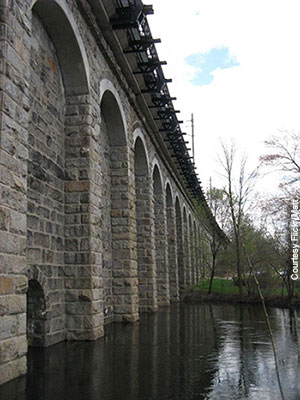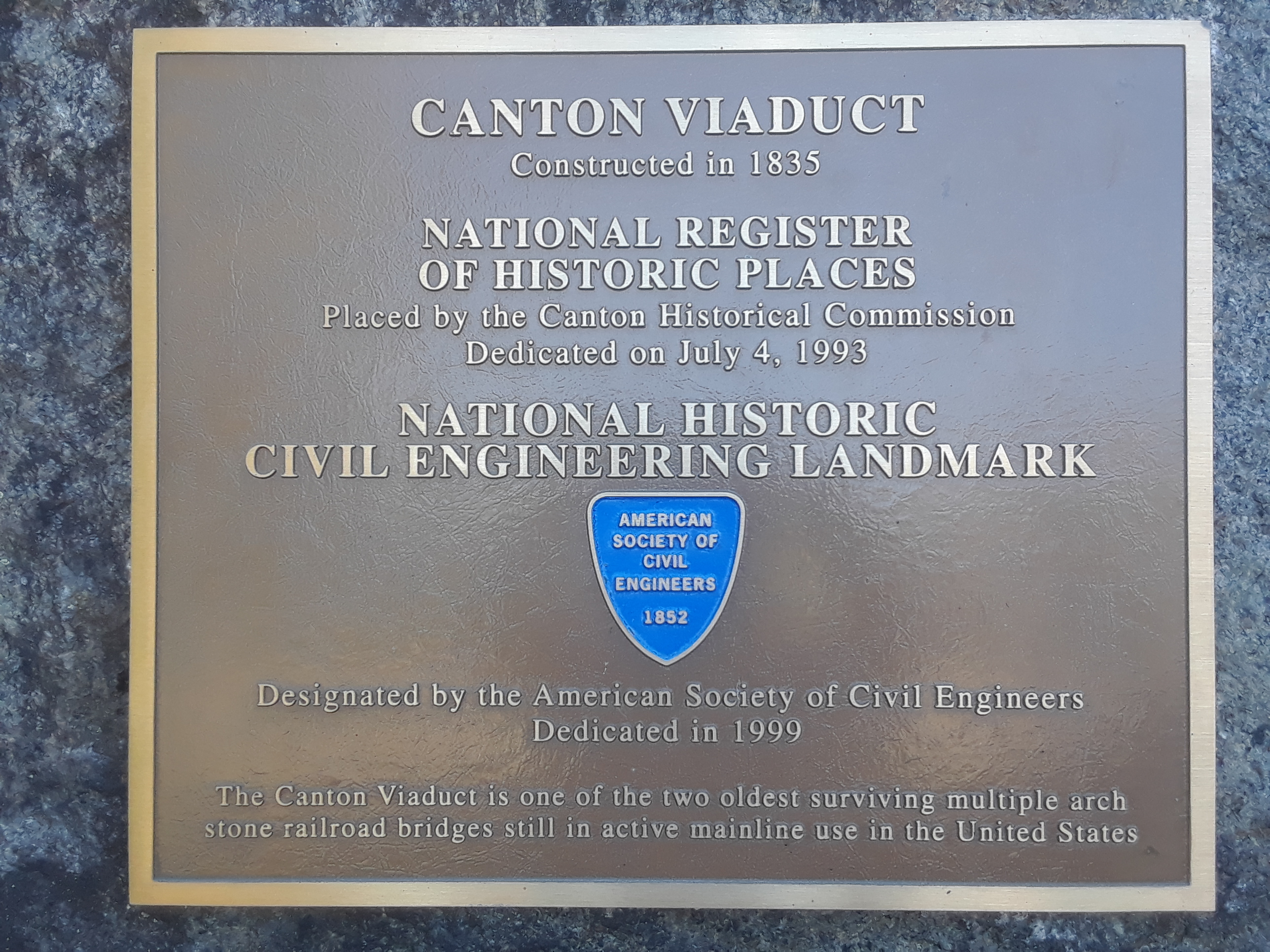Canton Viaduct
42 09 28.8 N, 71 09 14.5 W

When completed, the Canton Viaduct was the longest and tallest railroad viaduct ever built. It is the last surviving viaduct of its kind and has been in continuous service for over 170 years.
"As one comes from Norwood, the bridge does form a lovely picture with its many arches through which flow the waters of the branch, thence falling over the dam below, and from the east the picture is also impressive."
- "A History of the Viaduct," Canton Historical Society
For more than 174 years, the Canton Viaduct has stood as a dominating structure on the New England landscape. When completed in 1835, the slightly curved, granite masonry bridge - 615 feet long, 70 feet high, and 22 feet wide - carried a single track of the Boston and Providence Railroad, providing a critical link in the establishment of rail service between Boston and New York. In 1860, a second track was added. With few major alterations, the viaduct has continued to provide safe rail transportation to heavier and faster loads throughout the 20th century.
Beginning in the early 1990s, the viaduct underwent a rehabilitation effort aimed at retaining its historic integrity while making it safe for modern, high-speed rail service. Following restoration, the viaduct has continued to serve as crucial transportation link into the 21st century, helping to provide 150 mile-per-hour, electrified, passenger rail service between Boston and Washington, D.C.
Facts
- The Canton Viaduct is believed to be the second oldest multiple-arch masonry viaduct in the United States. It contains 42 deck arches (21 on each side) and was designed with hollow spaces between its walls, strengthened by solid buttresses below the arches.
- After a second track was added to the viaduct in 1860, its only alterations were the installation of iron cross-beams and railings in 1880; concrete reinforcing of the exterior arches in 1910; and the opening of an arch for street traffic in 1953.
- The viaduct's chief engineer was Captain William Gibbs McNeill, a graduate of the U.S. Military Academy at West Point. His assistant was Major George Washington Whistler, father of the well-known painter, James McNeill Whistler, who, it is said, became an artist in contradiction to his father's desire that he choose engineering as a profession.


